PrairieCoast Equipment is Rural Lifestyle Dealer’s 2015 Dealership of the Year in the multi-store category. The team at the Kamloops, B.C., location includes, from left to right: Doug Teeple, Wayde Marshman, Russ Platt, Tyler Goss, Derek Boe, Jarrett Price, Emil Peters, Devin Gooch, Dennis Landis, Ryan Johnson, Drayden Moore, Frank Holt, Ryan Preece, Dominic Berger, Terry Tosh, Sierra Brugger and Karla Nevins.
PrairieCoast Equipment began in 2009 with the merger of 4 John Deere dealerships in Alberta and British Columbia. The dealership opened a new rural lifestyle store in Kamloops, B.C., in 2013, bringing new awareness to an area it had served for more than 40 years.
PrairieCoast, now comprised of 8 locations, receives the 2015 Rural Lifestyle Dealer Dealership of the Year award for multi-store dealerships, based on its performance, innovation and more. The Kamloops location has the largest territory in the dealership group, stretching from Prince Rupert on the west to Kelowna on the east and covering nearly 890 miles (1,400 kilometers).
Building a Dealership
Dennis Landis, PrairieCoast chief executive officer, and his family owned Peace Farm Power, one of the 4 dealerships that now makes up PrairieCoast Equipment. The other dealerships were Friesen Equipment, Greenway Equipment and Greenline Equipment. He explains the reasons behind the consolidation: “We were a single store for 30 years and we were very successful as a small family business. But then to get to the next level, we went to a second store, a third store, a fourth store and continued like that for 10 years. John Deere was pushing for larger volume dealers and there are a lot of gains in that,” Landis says. (Related Video: Evolving from a Family-Based Business)
However, he says the consolidation also brought about concerns, especially related to serving the different markets over the large territory. The realities of limited opportunities to expand ultimately led to the decision to merge. “John Deere approached us to spearhead the expansion. And it probably took a year of us being approached by John Deere to say, ‘Yes, that probably could work.’ We put all four ownership groups under one roof and we did it in one day and everyone came in as partners — and some of us had never even met,” Landis says.
What the judges say …“PrairieCoast Equipment is an 8-store dealership with an extremely high revenue number for a rural lifestyle dealer … Their return on assets was very impressive at 9.93% ... Their market penetration was very strong at 51.9% ... Their growth over the last 3 years was excellent with a total of 35% … They have a solid community involvement program.” |
Two of the ownership groups have since been bought out. “Part of the merger was a succession plan for them as well,” he says.
Focusing on the Market
The Kamloops store is primarily driven by the cattle business, hobby farms and smaller acreages. “The average rancher here would have anywhere from 60-200 head in a cow-calf operation. The last few years the cattle prices have increased so we’re seeing growth in that area,” says Ryan Johnson, regional manager, who oversees the Kamloops store.
“We’re seeing more and more people coming from the major centers, such as Vancouver, looking for smaller acreages to retire to or to lead the hobby farm life. And there’s been a big push in the last few years for homegrown food,” he says.
PrairieCoast EquipmentFounded: 2009 Locations: 8 Employees: 265 Major Line: John Deere Shortlines: Brandt, Stihl, Degelman 2014 Revenue: $186 Million ($144,075,605 wholegoods; $27,255,256 parts; $13,278,228 service; and $1,513,115 agriculture management solutions (precision ag)) 3-Year Sales Growth Figures: 2012: $161,024,629 2013: $180,543,233 2014: $186,092,204 2014 Return on Assets: 9.93% Awards: Named to Canada’s Best Managed Companies in 2013 and 2014; John Deere Aftermarket Achievers awards in 2011, 2012, 2013 and 2014; John Deere’s Number 1 Tractor Dealer in Canada in 2011; John Deere Manager’s club winner in 2013 and 2014 |
The wide territory offers the biggest challenge as well as opportunities for growth. “We have to go about our business with a total team approach. Due to our geographical challenges, it’s a must that we are able to lean on each other,” Johnson says. (Related Video: Growing the Service Business with Remote Service Techs)
Starting New
Kamloops is a city of about 85,000 that is located in what is known as the interior of British Columbia. The new store at 30,000 square feet is double the size of the old store. It’s also located right on Trans-Canada Highway 1, the main highway that crosses Canada, while the previous store was tucked away in an industrial park. The service department is about 15,000 square feet; the parts warehouse is 8,000 square feet; and the showroom is about 4,000 square feet. There is also a second floor that has a breakroom and extra storage and a mezzanine provides an open atmosphere.
“We grew out of our location and wanted to create more of a destination store. For example, in our showroom, you’ll see a lot of toy displays and clothing displays. We never had that at our previous location. We opened at Christmas time and we were all just astounded at how many people were just coming in to buy toys,” Johnson says.
Landis says the dealership has built 4 new stores in the last 8 years, all customized for each location and customer base. The new building in Kamloops provides other advantages. “It’s not just size. It’s also the efficiency of the layout of the building as well. If a building was 40 years old, it probably was added onto 4 or 5 times and each time you end up with a hallway or dead space,” Landis says.
The Kamloops store rotates the equipment it features in the store and on the front lawn. Smaller equipment, such as lawn tractors and small attachments, are located outside, under the store canopy. Larger tractors are located in a lot beside the store and can be viewed as customers drive in.
Dealer Takeaways
|
“What we noticed when we opened this location is how many non-typical farmer-type customers would come in that didn’t even realize there was a John Deere dealership in Kamloops even though we had been here for 40 years,” Johnson says.
Working Together
The Kamloops team includes two ag sales people, one turf sales person, a parts manager and four parts staff, a service manager, service writer and 10-16 service technicians, depending on the season.
Numbers and experience help direct the dealership’s sales strategies, with Johnson doing regular updates to see what might need to be changed. He says market share and customer satisfaction are key indicators for him. “We get our annual unit budgets from John Deere in November based on market share. Those numbers get broken down between the regional managers based on what stores we feel can achieve the budget and based on where we finished our previous year. That would then get trimmed down individually to each salesperson. That obviously gets tied in with each store’s annual budget based on unit projections and previous year’s history and what we feel the market’s going to do in the coming year,” Johnson says.
He then checks the store’s performance each quarter, checking gains in market share. “July 2014 might not be the same as July 2015 depending on the weather, so generally, quarterly results give us a better idea of where we sit year-over-year, quarter-over-quarter,” he says. (Related Video: Interfacing with the Team and Ensuring Accountability)
Johnson meets weekly with his sales team and monthly with his department managers. He also checks in with customers for their views on how the sales team is doing. “I try to be as involved with the customers as I can. I ask them questions like ‘When was the last time you had one of our sales reps at your farm?’” Johnson says.
They work with John Deere to send regular surveys to customers where they are rated from 1-10 on the entire experience. A rating of 9 or 10 is passing and everything else is a fail. Johnson says the Kamloops location regularly hits the 10 rating.
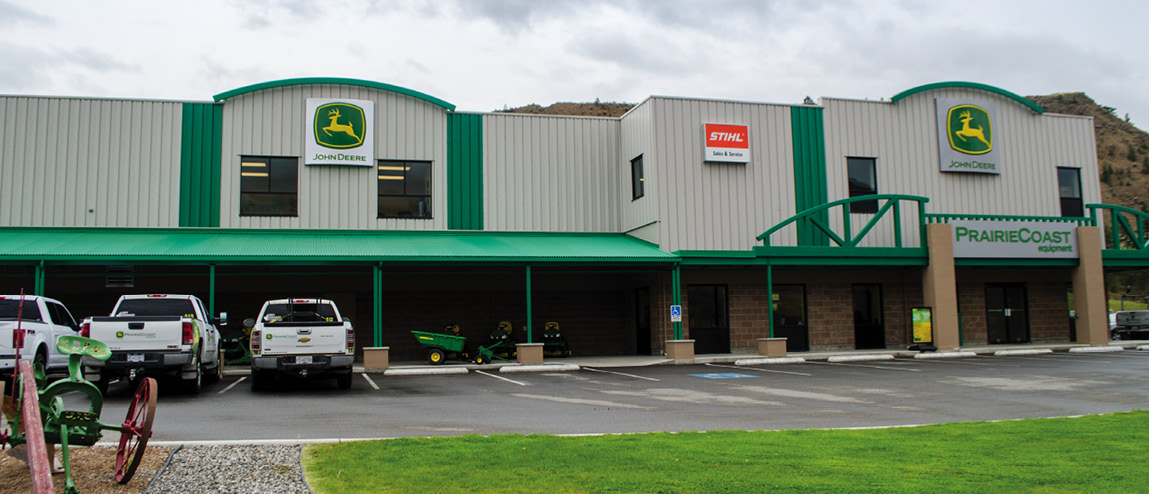 |
| PrairieCoast Equipment began in 2009 with the merger of 4 John Deere dealerships in Alberta and British Columbia. This location, the Kamloops store, was built in 2013, along Trans-Canada Highway 1. The new store is about double the size of the older store, which was located in an industrial park. |
Adding Service Innovation
Johnson expects service to be a significant driver in the dealership’s growth. The shop has 8 service bays now and an outside pad. PrairieCoast is increasing service revenue and meeting the challenge of a large service area through a unique arrangement — technicians based in the field. Each field tech has equipment at their locations, such as welders, air compressors, even a crane, as well as stocked service trucks. The dealership sends parts and replacement stock to their locations.
“Their jobs are scheduled through the service manager. All the work orders and everything would be generated through here and sent to the technician so he knows who needs what and what the priority is.
“They’re held to the same standard as a person that comes to the shop from 8 a.m. to 5 p.m. every day. They’re expected to carry out their workload and you have to trust that person and customers have to trust them because they are viewed as your dealer representative. If we don’t have that right person looking after customers, then my sales team probably isn’t going to sell those customers more tractors,” Johnson says.
Johnson says that it’s important the field techs live in the area they are serving. “You have to take your time and be choosy. We hired an individual out of Vanderhoof. He was from that area, so he knows our customers and he’s a well-respected guy. It was a natural fit,” he says.
Enhancing Management
PrairieCoast is making other changes to increase sales revenue, such as implementing a new customer relationship management (CRM) system through CDK Global. The dealership has been using the company’s dealership management system for 4 years, so it made sense to add the CRM component. Johnson says their previous system was difficult to use and data was not being entered properly. (Related Video: Leveraging a New Customer Relationship Management System)
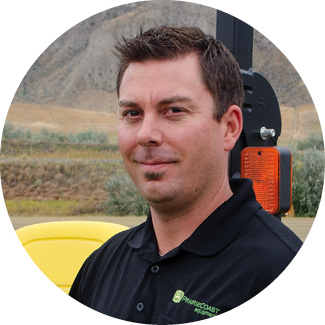 |
| Ryan Johnson is a regional manager for PrairieCoast Equipment and store manager for the dealership’s Kamloops, B.C., location. |
“If one of my guys was away for a week making sales calls, it was pretty much a full day for him to sit down and log everything into that old system. This new CRM system is mobile-phone friendly, where you can basically touch and go and you’re onto the next one,” Johnson says.
He estimates they have about 75,000 registered customers in the database for all the locations, with about 10,000 making up the bulk of sales. “With the new CRM, we can take the 10,000 customer list and segment it based on whether they are a grain farmer, cattle rancher or landscaper. We can better understand their spending levels, their equipment ‘flip’ needs, what they’re spending on aftermarket and what leases are expiring,” Johnson says.
They haven’t yet rolled out the system completely, but new data is being added. “Every time we do business with a customer, we’re interfacing with the new system. We’re working on 2 stores right now as trials and then we’ll roll the system out completely,” Landis says.
Developing Management
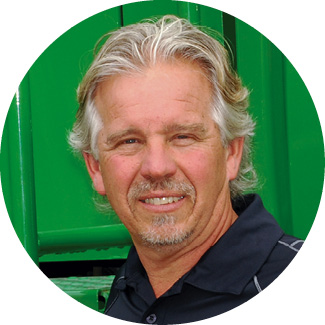 
|
| Dennis Landis is chief executive officer of PrairieCoast Equipment. His family owned Peace Farm Power, one of the dealership’s that merged to create PrairieCoast Equipment in 2009. |
Landis says the dealership has taken a professional and strategic approach to developing its management team. “Even though we’re a family business, we hire and promote for talent. We recognize that professional leadership is the next level,” Landis says.
He has set up a dealership-wide management group that he calls an enterprise support team. The team includes 9 people that serve as regional managers. Because of the wide territory, they meet via teleconference every 2 weeks and Landis meets in person with each of them monthly. The entire group meets annually.
“My main role is to give vision and direction to these 9 people. I’m also involved in setting our culture and planning for expansion. The day-to-day dealings I’m not involved with whatsoever. But I will do farm visits and meet with customers. Getting firsthand feedback from our customers is important,” Landis says.
Encouraging Employee Ownership
Landis has also implemented a professional approach to rewarding employees. Ten employees, including Johnson, have been brought in as partners and were given the chance to purchase shares of the company. The arrangement is referred to as the employee corporation.
“They get a percentage of the profit and they also contribute as a shareholder. It’s my succession plan. Our goal is to leverage these 10 key employees for our future. There is no question that any one of them could be the next leader and the other ones would be long-term people who would take this company from wherever we started,” Landis says.
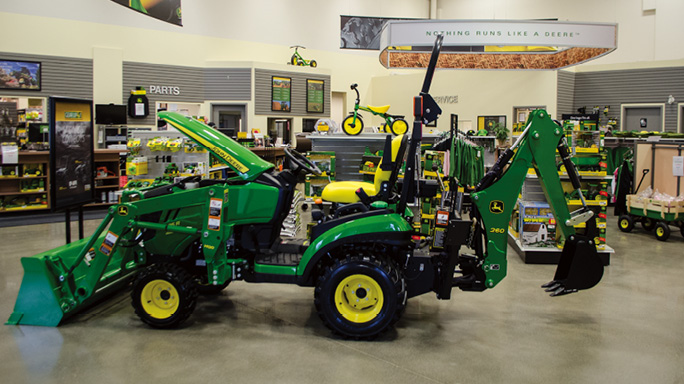 |
| The new Kamloops store features a showroom that is about 4,000 square feet and incorporates a service counter. Retail merchandise helps bring in customers who had not been familiar with the dealership at its old location. |
Landis wanted to make sure all employees, not just a select few, could take part in company ownership. They are now setting up an employee stock ownership program (ESOP) that will be open to all employees who have been with the company a year or longer.
“Some ESOPs are done with the idea in mind that this will be a way to raise additional funds for expansion. The purpose behind our ESOP has nothing to do with that. We wanted to reward our long-term employees with ownership in the company. And also when we have a good year, they would get more than just their wage or bonus. They would also get a share of the company’s profits,” Landis says.
They are using a third party, a Canadian company called ESOP Builders, to set up the program. Landis expects they’ll have 20-30% involvement after the first year. “Sometimes as dealers, we’ve got a lot of good ideas, but not all of them are still working 5 years later,” he says. “I think it will just be a matter of time and I think that there will be a great acceptance. Our goal is to have 50% or more of our employees in the program,” he says.
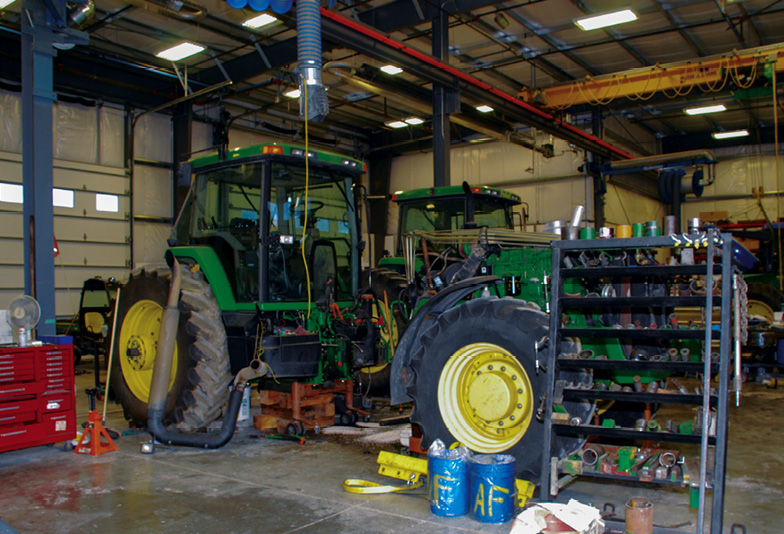 |
| The service department at PrairieCoast’s Kamloops, B.C., location is about 15,000 square feet and includes 8 service bays as well as 8,000 square feet for the parts warehouse. Because of the dealership’s large service area, the service department also has technicians based in the field. |
Nurturing the Team
Another employee program seeks to nurture the individual through community service. Three years ago, they began working with Live Different, a Canadian non-profit organization, to build houses in Mexico. For the last 2 years, as many as 20 employees have traveled to Vincente Guerrero, Mexico, between Christmas and New Year’s and they’ll make a third trip this December. (Related Video: Giving Back Through Community Service to Promote Core Values)
“One of our company core values is community involvement and social responsibility. Our team has been very successful with helping out in local communities. With strong employee engagement we wanted to expand our footprint internationally, to see how we could make a difference,” Landis says.
The company contributes monetarily to the project and covers the time away and travel expenses of its employees. Live Different coordinates the logistics when the employees are on site. Throughout the year, store employees will hold fundraisers to raise money for building supplies, so customers are involved as well.
“A lot of church groups do mission trips with their young people, but if you missed doing that as a teenager, where else can you do that? It’s a good way to give back and to also have a change in our perspective on how 90% of the world lives,” Landis says.
Seeking Coaching
Landis is part of other initiatives to nurture his own leadership skills. For instance, he belongs to two groups through John Deere — a yearly summit for executives from diverse industries and a peer group of 5 Deere dealers who meet twice a year. He also belongs to TEC Canada, where he meets monthly with a group of 18 executives, entrepreneurs and others from outside the agricultural industry. They listen to experts on business topics and break into small groups to discuss the topics and their own business issues. Landis also meets with a personal business coach. (Related Video: Pursuing Personal Development Insights from Leaders Inside and Outside the Ag Industry)
“Professional leadership was the next level…”
“Your mind is opened up to what’s out there. I’ve always been challenged being part of other John Deere peer dealers where you meet someone who broke the $250 million mark or something like that. And this group challenged me in other ways as well. The accountability with the coaching has opened me up to a bigger world than just the farm equipment world,” Landis says.
Planning Growth
The merger that formed PrairieCoast may have been recent, but Landis is already looking forward to the next expansion — and what could limit the dealership’s expansion. Finding experienced technicians is always a concern, along with commodity prices and weather.
“But there are other factors now and one is the sheer size of where John Deere would want us to be and where we’re at now. What does that next size look like because the next size isn’t just adding one more store. The next size will be double and then double again,” Landis says. “Whether it be in the small ag or the large ag dealership, I think you’ve got the wrong leader if they don’t have the flexibility or openness to say ‘What does double our size look like?’”

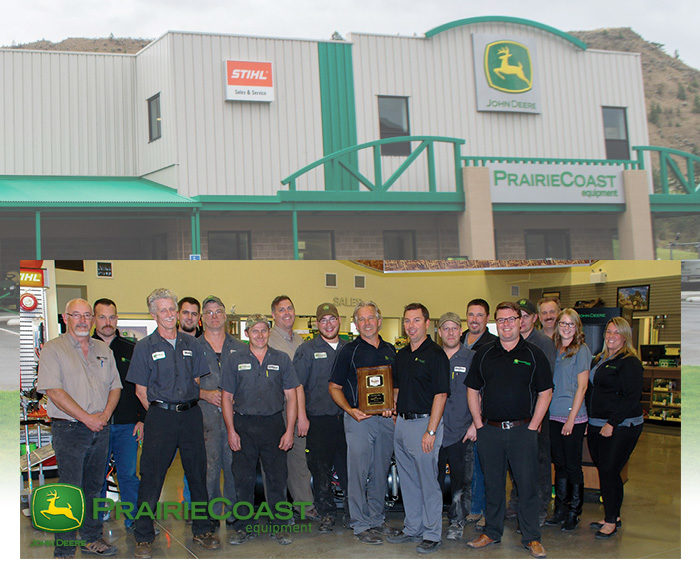




Post a comment
Report Abusive Comment